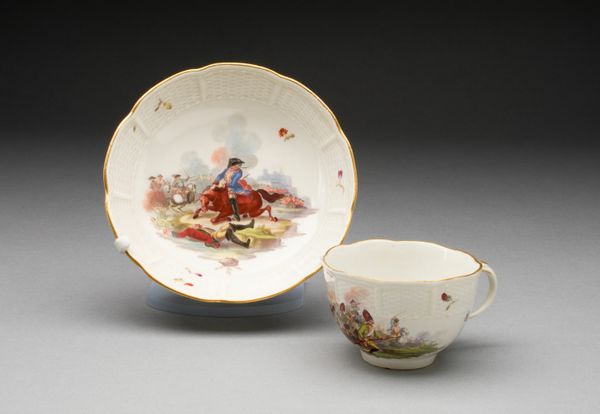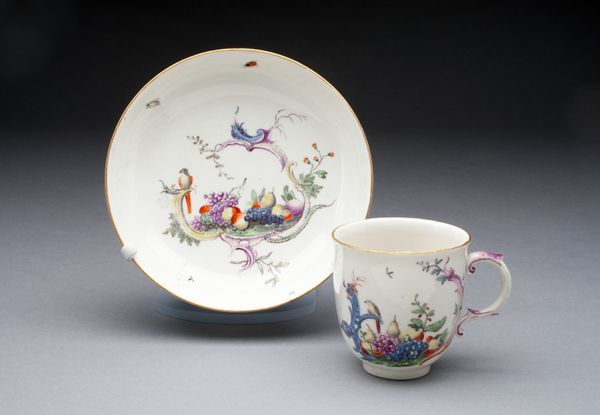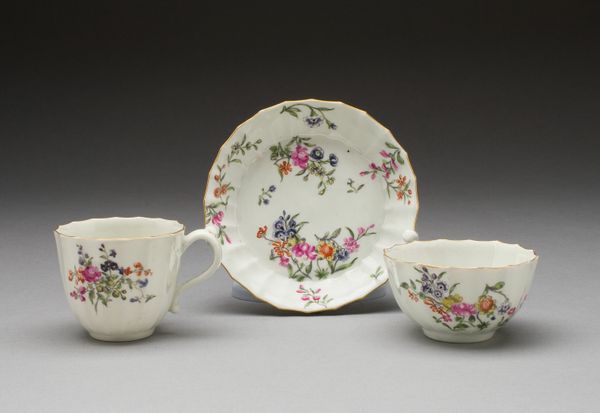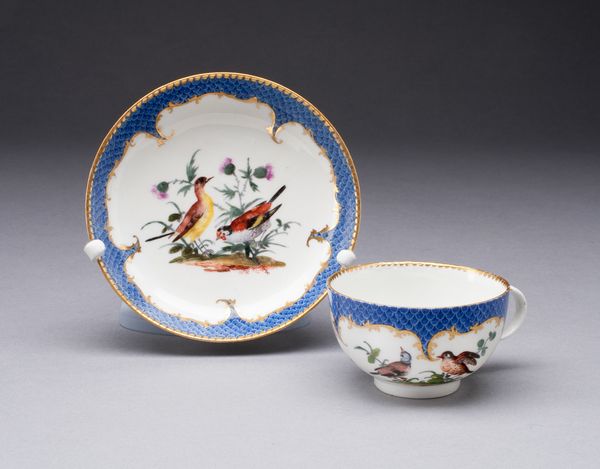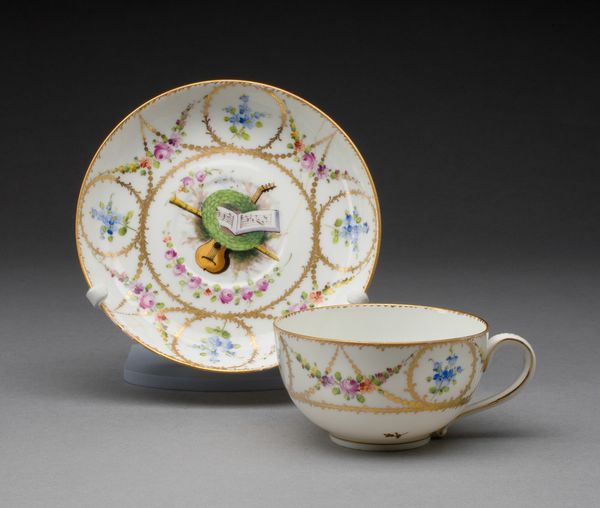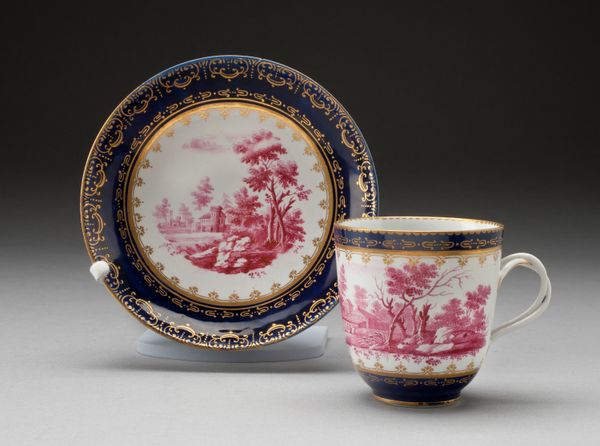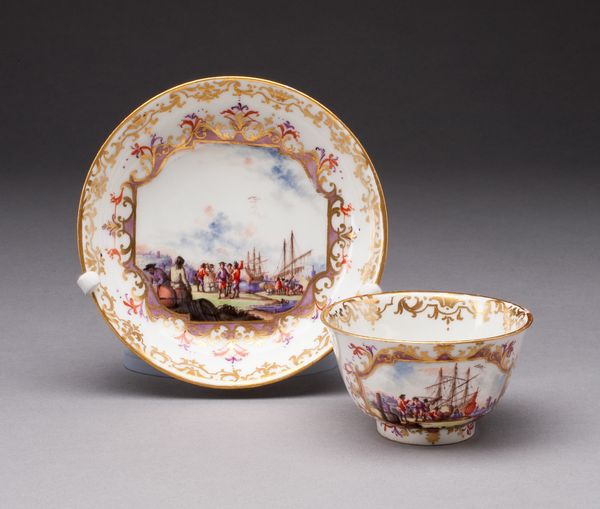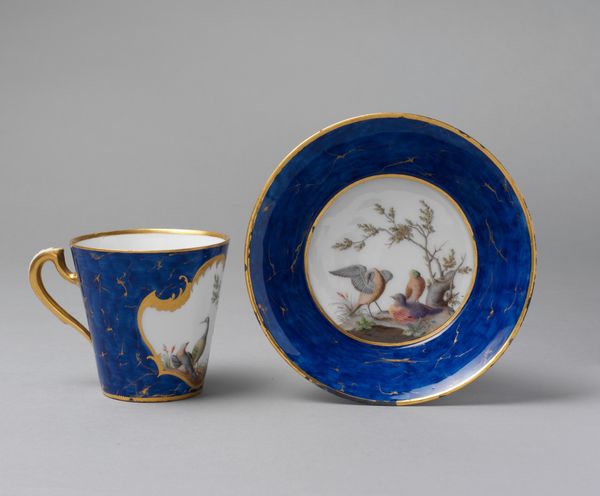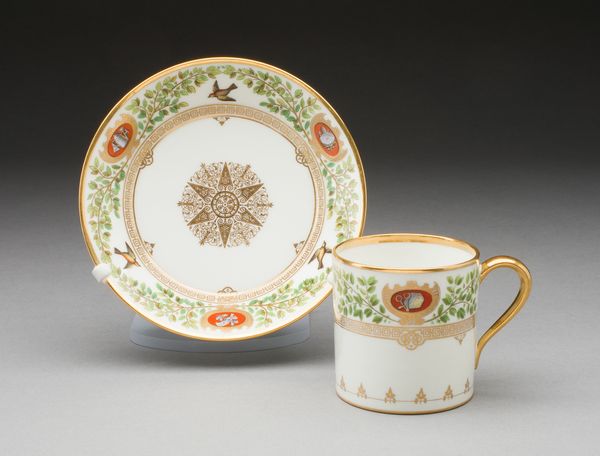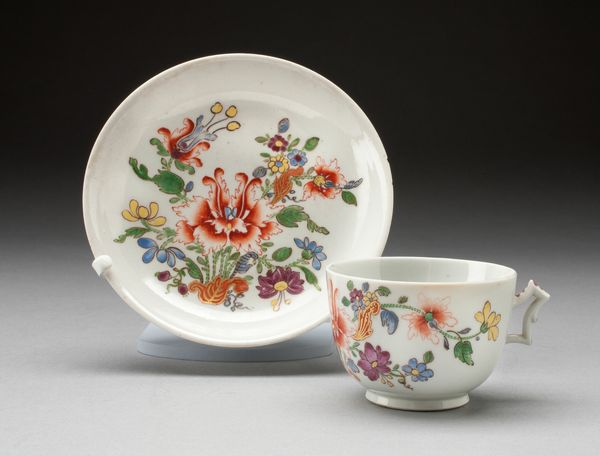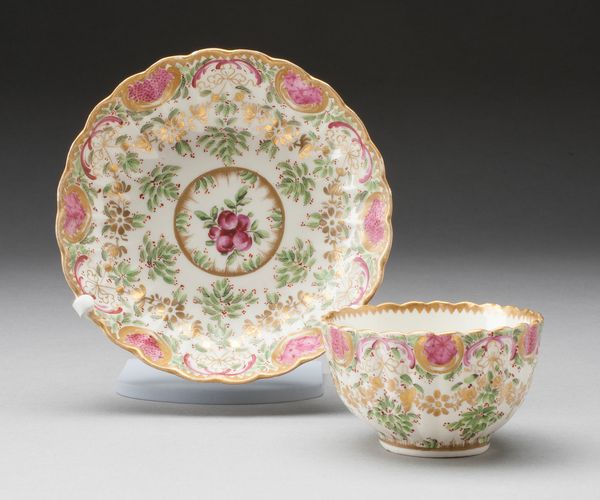
painting, ceramic, porcelain
#
painting
#
landscape
#
ceramic
#
porcelain
#
ceramic
#
genre-painting
#
decorative-art
#
rococo
Dimensions: Cup: 4.8 × 10.5 cm (1 7/8 × 4 1/8 in.); Saucer: 2.9 × 13.3 cm (1 1/8 × 5 1/4 in.)
Copyright: Public Domain
Editor: Here we have "Cup and Saucer," crafted sometime between 1763 and 1774 by the Meissen Porcelain Manufactory. It's porcelain, of course, with painting, from the collection of the Art Institute of Chicago. The painting is very small in scale, but the intricacy is apparent. What do you see in this piece? Curator: Its Rococo sensibilities are evident not only in its function as decorative art, but in the delicate interplay of its painted and material elements. Notice how the vivid, patterned border frames a classical scene with an almost picturesque quality. How does this framing influence your perception of the central scene? Editor: I think it draws the eye in and focuses the attention on the tiny scene depicted on both the cup and saucer, which feels a bit like a separate world, but it also makes the scenes appear contained, controlled. Curator: Precisely. This tension between freedom and containment is a key formal characteristic. The miniature landscape, complete with figures and architecture, exists within the rigid confines of the porcelain form. The use of perspective, albeit limited by the small scale, attempts to create depth and space on a two-dimensional surface. How does the use of colour contribute to this tension? Editor: The colors are bright and cheerful. It contributes to the overall pleasant and picturesque scene of everyday life. The colours contribute to a balanced harmony, despite the slight variations in the painted landscape details on the cup versus the saucer. Curator: The limited, yet deliberate colour palette contributes to the object’s visual harmony, highlighting the overall design rather than aiming for realistic depiction. This balance, this interplay, is precisely what defines the formal power of this piece. What will you take away from looking at the form of this work? Editor: That looking at how colours and shapes relate within a form gives one the best context. Curator: Indeed, understanding its formal vocabulary unlocks layers of meaning and aesthetic appreciation.
Comments
No comments
Be the first to comment and join the conversation on the ultimate creative platform.

